As the hoarding gradually falls away, it’s like a butterfly emerging from its chrysalis. The historic baths in Dún Laoghaire have been encased in an enormous hoarding since 2017. Now the final stage of renovation is approaching the finish line.
At one point the baths in the south Co Dublin town were scheduled to reopen in March 2020 – they closed in 1997 – but by the time Covid-19 hit it was already far behind schedule. Day after week after month, long before and then in and out of lockdowns, hoardings impeded the coastal walkway for nearly 200m, with little seeming to happen behind. Such was the pause you’d fancifully wonder if had they discovered a Viking settlement.
But in recent weeks, as the curtains pull back, a view of the handsome restoration is unfolding.
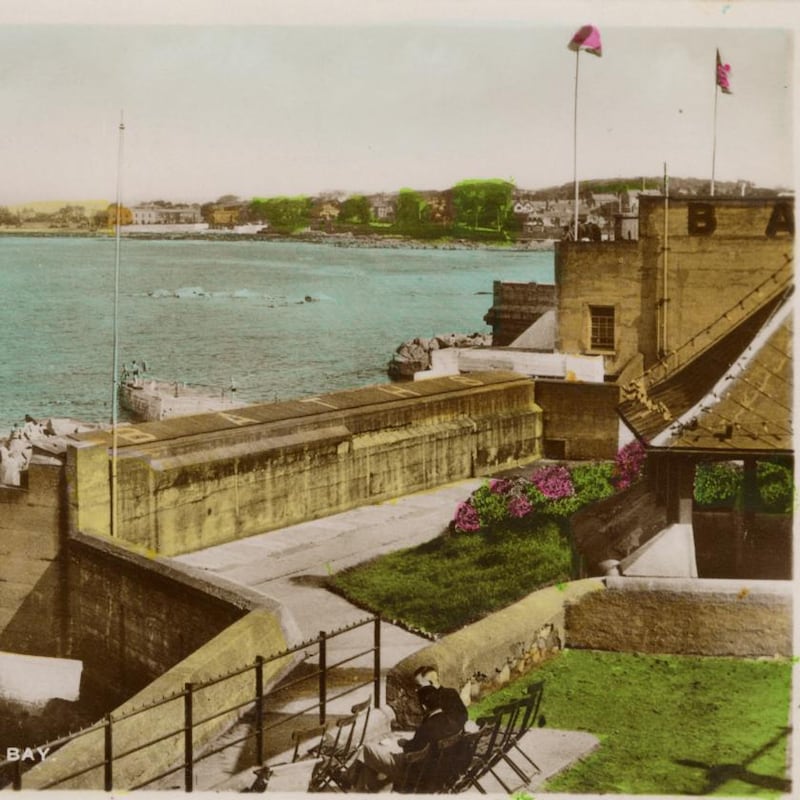
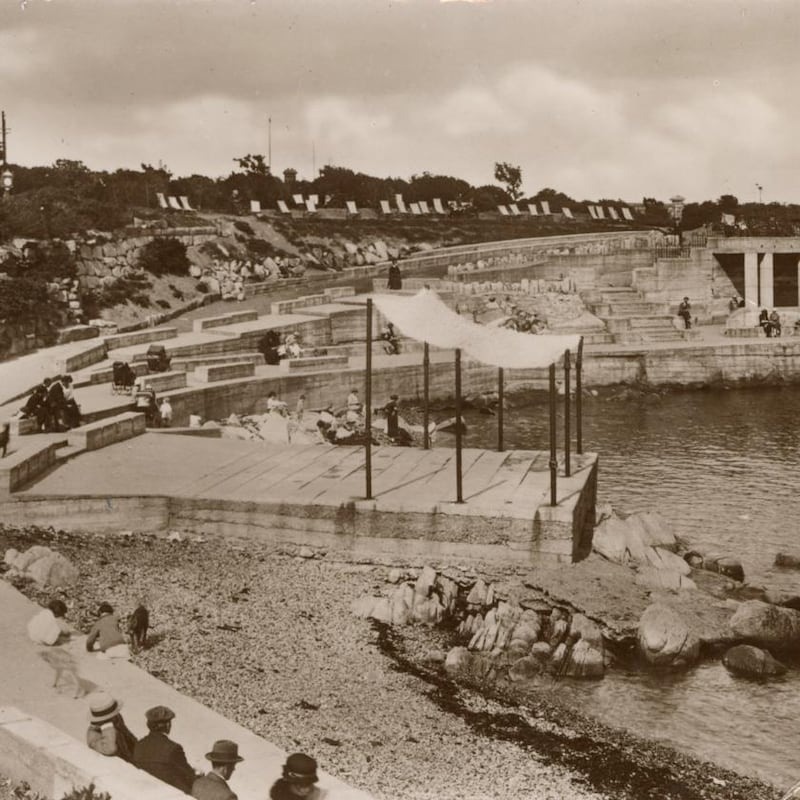
For decades the formerly beloved baths, which date from 1843, were a derelict blight on the seafront, a lost opportunity for a public facility. After a succession of failed proposals the renovation, designed by Dún Laoghaire-Rathdown County Council architects (with A2 Architects enabling) began in 2017-18. The original display indicated it would finish in 2019.
The original "Baths" mosaic embedded in the ground at the entrance has been restored, and cast-iron railings will be reinstated along the street
But significant structural work was needed to underpin and stabilise the main building when extensions were removed and to restore walls along the embankment shoring up Queens Road. Additional challenges were presented by the rocky coastline, temporary examinership (one of the construction partners, Mantovani), plastics pollution and a global pandemic. The public amenity is now expected to open for locals and visitors in the late spring of 2022.
Sitting with Bob Hannan, the council's senior architect, at a cafe table in the People's Park, we have a direct view through the park and across Queens Road to the Edwardian entrance building on the seafront, now visible again. Originally finished in dark-red pebbledash, the new smooth stucco and period render is painted soft white, visually linking with the larger but similar villa-style yacht clubs nearby.
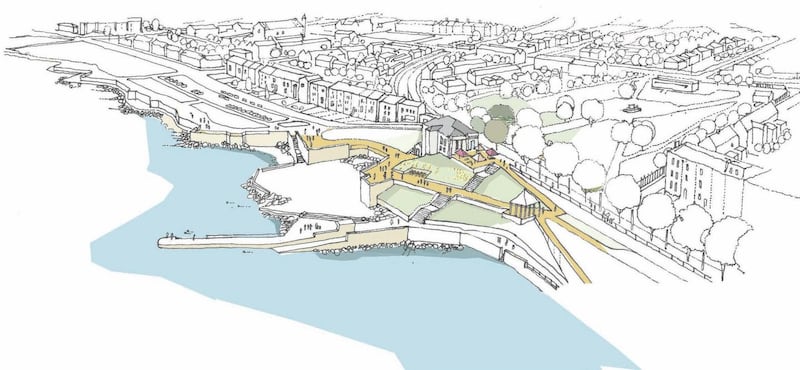

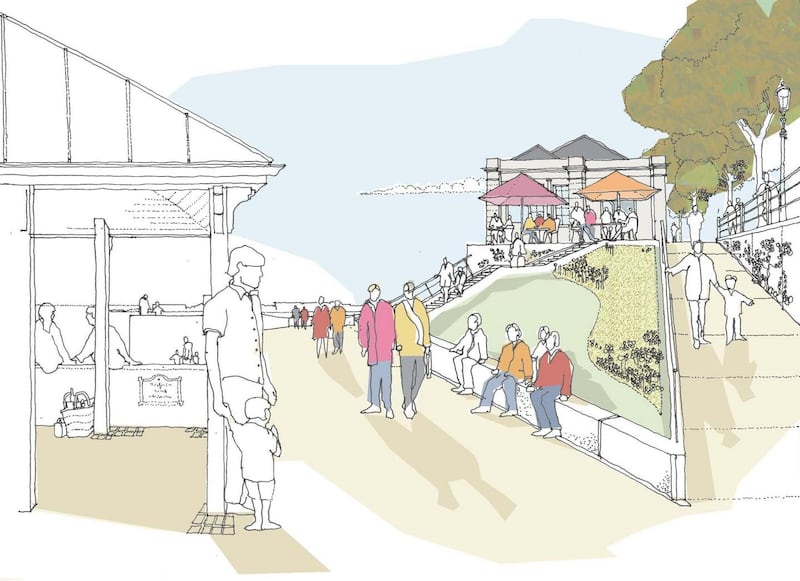
This street entrance is the upper level of the compact two-storey, 400sq m building. There’s a new slate roof, and finely detailed reproductions of the original casement windows, with 12 glass panes in each.
Locals may have forgotten, but no pool was included in the plans eventually settled on back in 2015 after a series of elaborate, privatised council proposals were rejected
The original “Baths” mosaic embedded in the ground at the entrance has been restored, and cast-iron railings will be reinstated along the street. Off the wood-panelled lobby, where in the old days boys went down one side and girls the other to change, there are “changing places” – fully accessible toilets. To the rear, across the full width, will be a cafe, with tall glazed French windows opening out to the sea. “There’s nowhere else where you can sit down in a cafe so close to the sea,” says Hannan.
Outside to the left, builders work on the cafe's outdoor street-level terrace, with a view of the new jetty and Mark Richard's Roger Casement statue, recently positioned at the end. Casement was born locally; as Cllr Melisa Halpin says, "it's fitting for Dún Laoghaire, long associated with British imperialism, to reclaim its internationalist and left-wing roots".
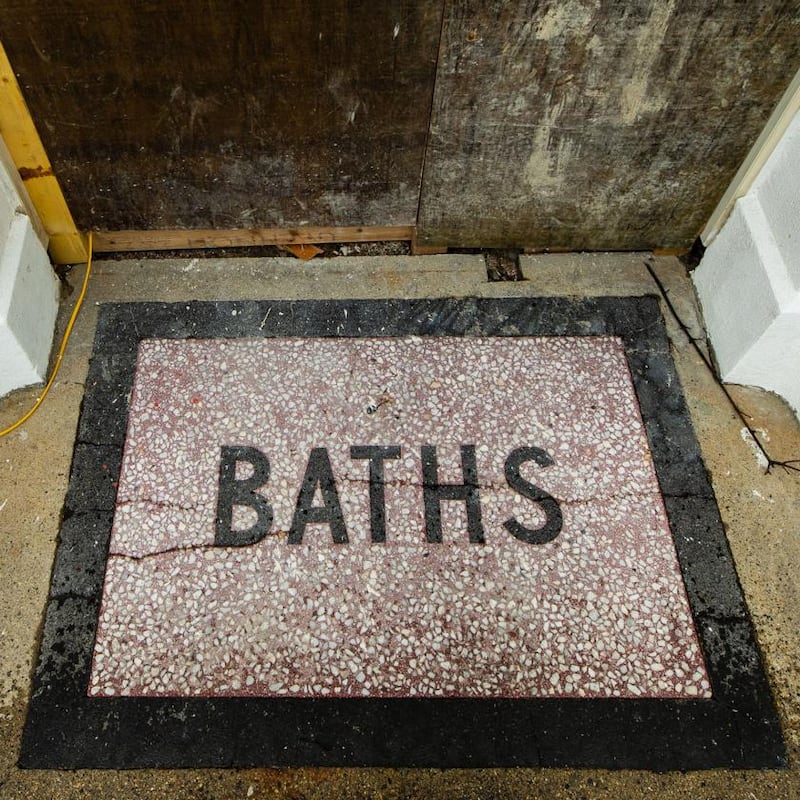
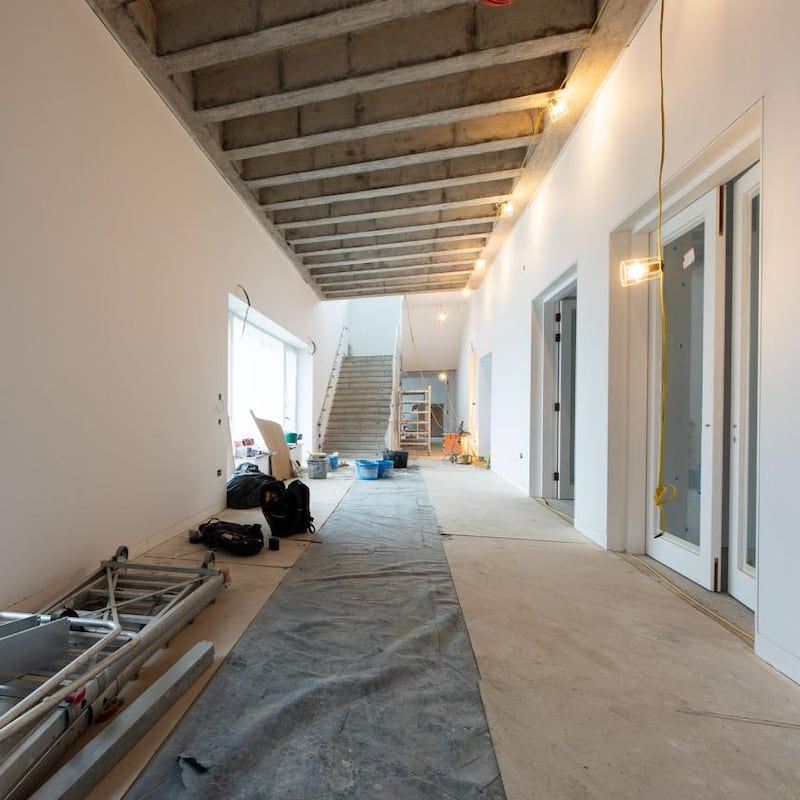
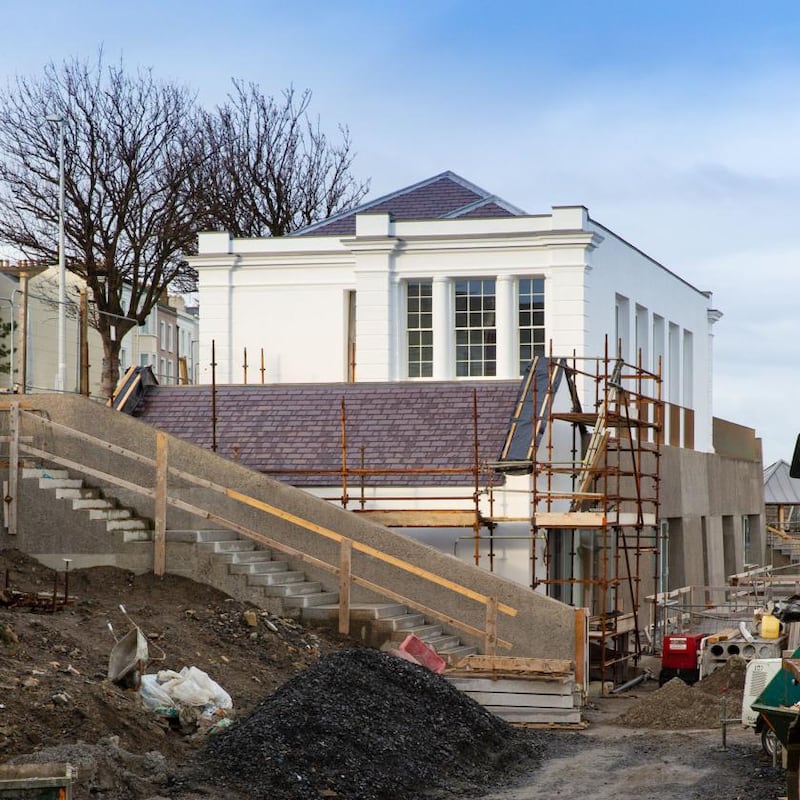
Lift and stairs connect to the lower level, which features five artists’ studios plus a common area for exhibitions and events. Various buildings at the back, added over the years on the sea side, were removed aside from a former “drying house” (containing old drying presses, for towels) at lower level, a simple structure with a striking timber and steel roof.
The projected €13.4 million budget, mainly funded by the council, is likely to be exceeded
Removing the dilapidated buildings, Hannan says, allows sunlight in, and enables a new walkway between Newtownsmith’s seafront Yellow Brick Road and Dún Laoghaire’s East Pier, with various levels and staircases, sitting and viewing points, grassed areas, and the refurbished Edwardian gazebo in the beach garden.
Farther along is a simple changing shelter, and a 35m jetty with built-in seating along its length (inspired by the swimmers' bench at Sandycove Harbour). Hannan foresees this will become the swimming place for the town.
Passers-by can see all this work taking shape. With additional structural issues during construction, poor ground conditions, Covid delays and the costs from accidental release of plastic fibres, the projected €13.4 million budget, mainly funded by the council, is likely to be exceeded.
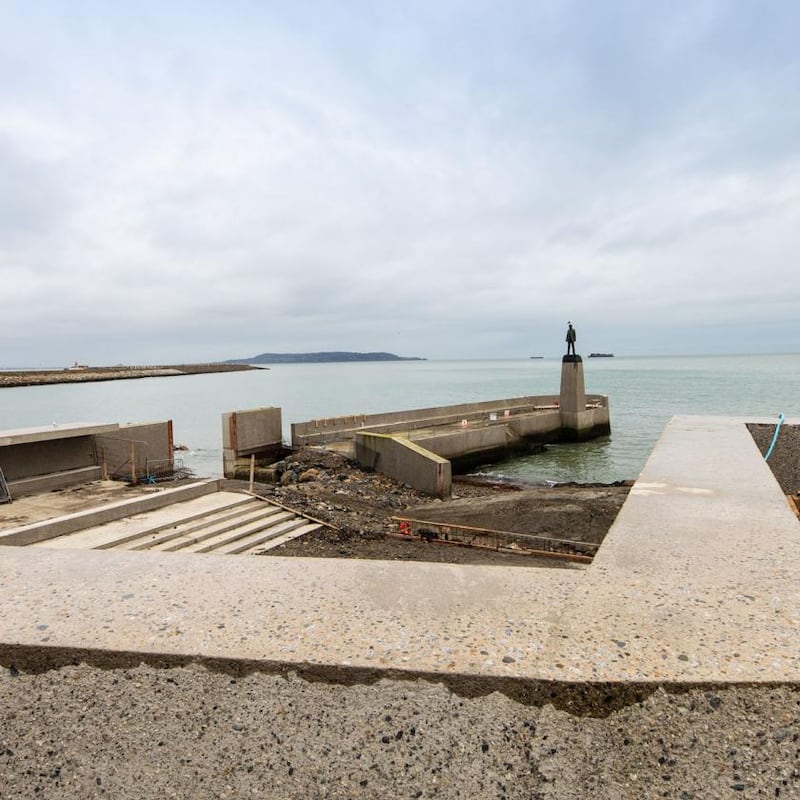
While there’s a distinct sense of relief that this first phase is finally nearly finished, and it’s widely welcomed that the Dún Laoghaire Baths remain in public ownership and open to all (a bone of contention with earlier council plans), there’s also some regret that even though it took so long there’s no swimming pool, and a perceived council resistance to including one.
'We fought long and hard for a swimming pool. It was going to be too expensive. Now, ironically, it has cost way more than the original estimates'
While the jetty will be for swimming off – and for use as a landing point for kayaks – there will be no actual baths when Dún Laoghaire Baths reopens, for now at least. Locals may have forgotten, but no pool was included in the plans eventually settled on back in 2015 after a series of elaborate, privatised council proposals were rejected.
Perhaps the continued and increasing interest in sea swimming could not have been predicted at the time. It was reported that including a pool would have pushed the then projected baths cost of €2.5 million up to €20 million, although it’s unclear whether that was for a heated indoor pool rather than a simpler outdoor tidal pool.
Melisa Halpin, a Save Our Seafront convenor and People Before Profit councillor, says “we fought long and hard for a swimming pool. It was going to be too expensive. Now, ironically, it has cost way more than the original estimates.”
She put a motion, supported cross-party, to retain a pool in the draft new county development plan, so it currently says “an objective of the council is to provide an open seawater pool as a part of any future phase of the development at the Dún Laoghaire Baths site”. And during the build, Hannan says, they ensured the lower area of the site has a covered-over “soft spot” that can be opened up if an open seawater pool is developed in a later phase.
'A tidal pool and seaweed baths will be looked at again in subsequent development, but now the push is to get what's under tender finished'
Halpin and the People Before Profit TD Richard Boyd Barrett had pressed for seawater baths in the first phase. She wants a free tidal pool – protection for children swimming and for low-tide dips.
“It’s not understandable that the one thing people in Dún Laoghaire all came together on has consistently been refused by the council. And now the council has spent four years on a project at the baths site that will have no pool in it. I know there will be huge disappointment when it opens and there is no swimming pool.”
Cllr Lorraine Hall of Fine Gael agrees that "it will come as a surprise that the baths will not include a pool".
"It will be a fabulous amenity when it opens," says Cllr Justin Moylan of Fianna Fáil. "A tidal pool and seaweed baths will be looked at again in subsequent development, but now the push is to get what's under tender finished. With the big uptake in sea swimming, it's probably an opportunity lost."
Juliet O'Connell of the Labour Party says that it's "exciting to see it unfolding" and that the work is very impressive. She recalls how "all 40 councillors wanted to have baths. They were there through the 19th and 20th centuries – and now, with sea swimming, safe access to the sea is even more important."
Councillors felt at least that there were plans for a pool even if not in phase one. But “phase one has been longer than we thought back in 2017, and that’s also disappointing. But these audacious plans don’t come without their difficulties, and this was a huge project. It’s still there in phase two.”
'Every effort should be made to take advantage in every way of the little open sea coast that is left us'
Despite all this, on a cold sunny morning, Sandycove to the right, pier to the left, watching shoreline work progress and hearing Hannan talk about the care and years that have gone into the project, the excitement is infectious for what’s shaping up to be a terrific amenity for visitors and locals.
It fits in with Dún Laoghaire’s development over the past 20 years, says Hannan, guided by principles to improve the town through greater public realm and population increase, and also connecting the seafront with the town. “This is for the long haul, part of a big picture in the development of Dún Laoghaire.”
Those connections with the sea have long been key to the port town, as indicated in 1897 when a public health officer, Mr J Byrne-Power, pointed out “the strange anomaly of a seaside resort so charmingly situated as Kingstown, without a respectable open sea bathing place … Every effort should be made to take advantage in every way of the little open sea coast that is left us.”
Dún Laoghaire Baths: A timeline
1843 Royal Victoria Baths built at Queens Road on Scotsman's Bay in what was then Kingstown. Offering fresh or sea water, and hot, cold and medical baths, including sulphur and seaweed, it became a popular bathing site for those who could afford it.
1896 Kingston Urban District Council bought the site, renovating by 1911 (cost: £13,000) as Kingstown Baths (later Dún Laoghaire Baths) for public swimming, with new indoor and outdoor pools, and hot seawater baths, and the current Edwardian entrance building. There were "separate sections for ladies, gentlemen and for children … equipped in first class style", and laundry for towels. "Rest lounges and refreshment rooms are also provided. In front are the open sea baths, with an excellent diving board." (From The Gate of Ireland: Beautiful Dún Laoghaire)
1930s The baths were renovated and extended (cost: £65,000), with three pools (large swimming pool, children's pool fed by tidal seawater, and babies' pool), "43 men's boxes, 127 ladies' boxes", a tearoom, a lounge, a laundry and medical baths. With good facilities, moderate charges and excellent transport links, it was popular with tourists and day-trippers.
Renovations since included heated indoor pools in 1970 and Rainbow Rapids waterslides in the 1980s.
1997 Dún Laoghaire Baths close, fall into disrepair and are derelict by early 2000s.
2002 Voluntary community organisation Save Our Seafront, founded by Richard Boyd Barrett to protect the coast and preserve the foreshore in public ownership, begins to campaign for the restoration of Dún Laoghaire Baths.
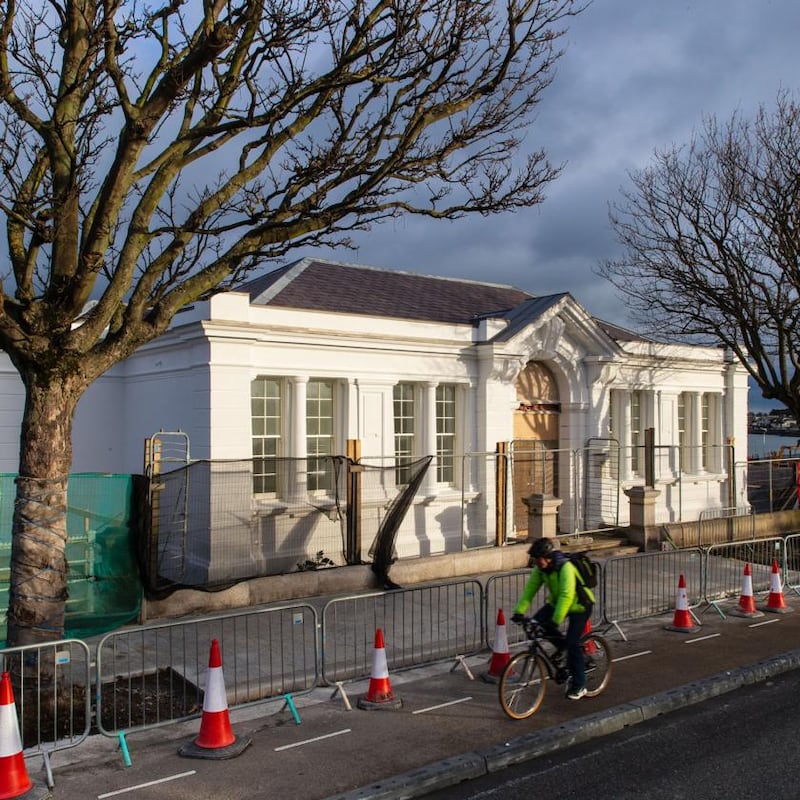
2005 €140 million proposal from Dún Laoghaire-Rathdown County Council to partially privatise the site (180 apartments over eight storeys, shops, restaurants, indoor pool, maritime park) rejected by councillors after strong public opposition, including thousands protesting in a march where Christy Moore performed. Other proposals in 2008 and 2010 also went west.
March 2015 Nearly 20 years after closing, plans unveiled for council development, involving public space and walkway, building renovation and new jetty, but without baths. Separately, Dún Laoghaire Harbour Company plans a €2.75 million "urban beach" at East Pier with a barge pool of heated, treated seawater,charging admission. (It doesn't go ahead).
Late 2016 Drawings displayed on Dún Laoghaire Baths building.
2017 Save Our Seafront welcome plans; "regret the omission of the swimming baths requested by the public". Fianna Fáil councillor (now TD) Cormac Devlin hopes €2.5 million build will start summer 2017, finishing in 2018 or early 2019. Construction delayed, cost increases on discovering part of site forms retaining wall for the Queens Road.
April 2018 Contract signed between council and joint builders Siac and Mantovani to redevelop baths and public area, expected to cost about €10 million and take under two years, opening spring 2020.
November 2018 More than a million plastic shards washed into Dublin Bay after small, thread-like fibres poured into the base of the new jetty didn't set and were washed out by the tide. Work stops for three-month clean-up.
March 2020 Covid halts already delayed project during lockdown.
2021 Progress visible by summer. In September Mark Richard's 3m bronze sculpture of Roger Casement is installed on a plinth at the end of the jetty, overlooking his birthplace.
Late spring 2022 Revised completion date.

















